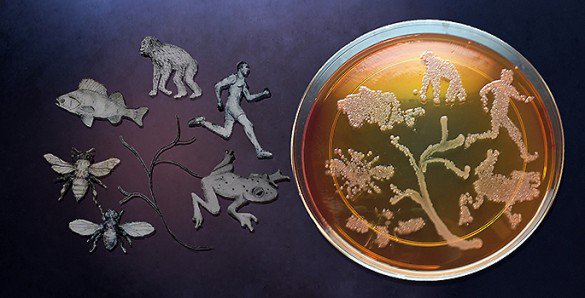
July 31, 2018
Research Highlight
Ferredoxin Disulfide Reductase in Archaea and Bacteria

A picture of the tree of life created using microbes on a Petri dish.Image credit: Robert Brucker, Vanderbilt University.
Disulfide reductases are enzymes in cells that catalyze reactions necessary for redox signaling and homeostasis. A well studied example is ferredoxin:thioredoxin reductase (FTR), which can be found in organisms ranging from cyanobacteria to plants. Recently, a team of researchers has examined a ferredoxin:disulfide reductase (FDR) from the methane-producing Archaea Methanosarcina acetivorans. Previously, little was known about this FDR beyond its crystal structure.
The team found that the way in which FDR works in cells is similar to FTR, but there are important exceptions. The study advances our understanding the role of FDR in methanoarchaea, and shows that FDR homologs could also be widespread in bacteria.
The study, “Towards a mechanistic and physiological understanding of a ferredoxin disulfide reductase from the domains Archaea and Bacteria,” was published in the journal Journal of Biological Chemistry. The work was supported by NASA Astrobiology through the Exobiology Program.